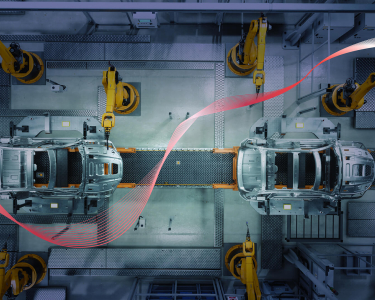Predict. Perform. Repeat: How Predictive Analytics Powers Sustainable Performance
As the Formula E season hits its midpoint, the margin between victory and failure narrows to milliseconds. Teams don’t just rely on the driver’s instincts. They rely on thousands of data points: tire degradation, fuel burn, corner speeds, and track temperatures. What wins races now isn’t just raw pace. It’s the ability to predict, adapt, and execute faster than anyone else.
That same principle is playing out across industries.
In high-stakes environments, whether on the track or in business, foresight is the new competitive edge. And predictive analytics is how you get it.
As organizations increasingly lean into data to stay competitive, the adoption of predictive analytics is skyrocketing across sectors. By leveraging machine learning, AI, and statistical models, predictive analytics uncovers hidden patterns that help forecast future behavior.
At Tech Mahindra, our fastest-moving clients treat data as a support tool and a catalyst for transformation. They’re embedding predictive analytics into everyday decision-making by investing in capabilities, upskilling their people, and nurturing a culture where curiosity, experimentation, collaboration, and continuous feedback drive meaningful progress.
Here’s what we’ve learned:
1. Seeing around corners with predictive insight
The power of predictive analytics lies in its ability to anticipate future outcomes. It enables organizations to plan with confidence and agility—whether forecasting demand, identifying emerging risks, or optimizing supply chains. When implemented effectively, these models improve profitability, reduce operational drag, and open new strategic options. The business case is strong: global predictive analytics is on track to exceed $100 billion in value by 2034, and industry leaders are already seeing the returns.
2. Predictive Analytics is the first step to AI maturity
Before AI can innovate, it must predict. According to Gartner’s AI Maturity Model, predictive analytics is the foundational stage of AI readiness. This is where organisations learn how to extract meaningful patterns from data, apply those patterns to real-world decisions, and improve performance over time. Companies that build strength in predictive analytics develop the reflexes and operating discipline needed to scale broader AI initiatives.
3. The Proof is in the performance
Some of the world’s best-known companies already demonstrate what predictive analytics can achieve at scale. Amazon’s recommendation engine drives a third of its revenue. UPS cuts fuel waste with predictive routing. Starbucks boosts loyalty with smarter modelling. GE Aviation keeps planes flying longer with predictive maintenance. More than just dashboards and reporting, these are competitive advantages powered by data.
4. Personalization is just prediction at scale
At its core, personalization is scaled prediction, with empathy. It's the ability to predict what everyone wants, needs, or does next. In healthcare, it’s used to identify at-risk patients and reduce readmissions. Media companies rely on it to predict audience interest and improve content placement. In manufacturing, it’s about preventing faults before they occur. That means forecasting credit risk, faster loan approvals, and detecting fraud in finance. Organisations succeeding today are reacting faster and predicting better.
5. Feedback loops are oxygen
Predictions are only part of the equation. The real value of predictive analytics comes from the learning cycle it enables. High-performing teams treat predictions as hypotheses, measure outcomes, learn from the results, and refine the model. Over time, this loop of forecast, observation, and adaptation becomes a self-improving system. That discipline turns a good model into a great one and makes predictive analytics sustainable across changing conditions.
6. High-quality data means low drag
Messy data is a drag on the runway. Clean data gives a lift. High-performance organisations treat data quality not as an IT issue, but as a shared responsibility. Strong data governance, integrated systems, and a shared understanding of data quality are foundational. Organisations that invest in it are cleaning up their data assets and powering their analytics engine with reliable, consistent, and actionable insight. Good data is a performance multiplier.
7. No machine runs without its people
While technology amplifies potential, the fundamental enabler is still the human element. Predictive analytics thrives when data scientists, engineers, and domain experts work together to shape meaningful solutions. It takes skilled people to interpret insights, design interventions, and lead change across the business. Talent, culture, and collaboration are what move predictive analytics from dashboards to decisions. The most forward-looking organisations treat this not as a tech project, but as a team sport—and they win because of it.
“Success on the track or in the boardroom isn’t just about speed—it’s about resilience, clarity, and the ability to adapt when conditions shift.”
Integrating predictive analytics across the enterprise requires a significant mindset shift. It requires trust in data, a clear purpose, and a culture that values continuous evolution.
Like Mahindra Racing, which balances speed with strategic precision, high-performing organisations use predictive analytics for traction control. This enables foresight, agility, and sharper decision-making when it matters most. In doing so, they embed resilience and proactivity into their core, laying the foundation for sustainable success in a fast-moving world.
The winners of tomorrow are fast and prepared. Predictive analytics is how we turn data into foresight and foresight into action. In racing and business, the edge goes to those who can adapt, evolve, and endure lap after lap.
Has over 30 years of leadership experience across industries. He has driven transformative growth in the Asia Pacific region through innovation and strategic leadership, earning accolades such as Leader of the Year 2023. Harsh is also a thought leader, frequently sharing insights on business transformation and diversity at global forums.








